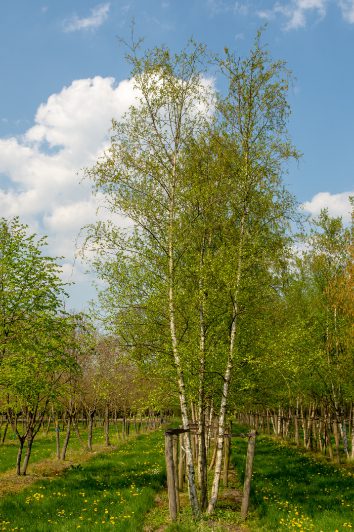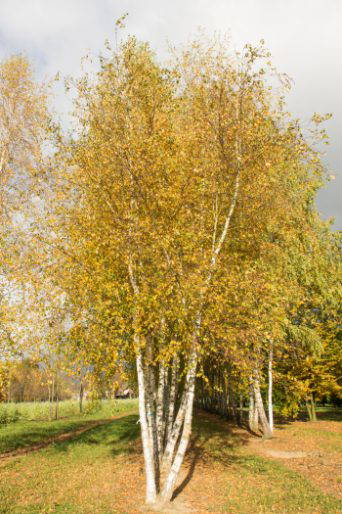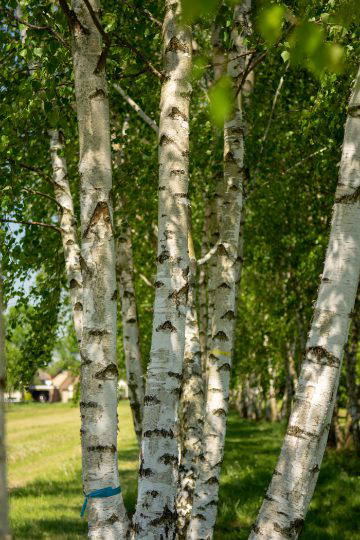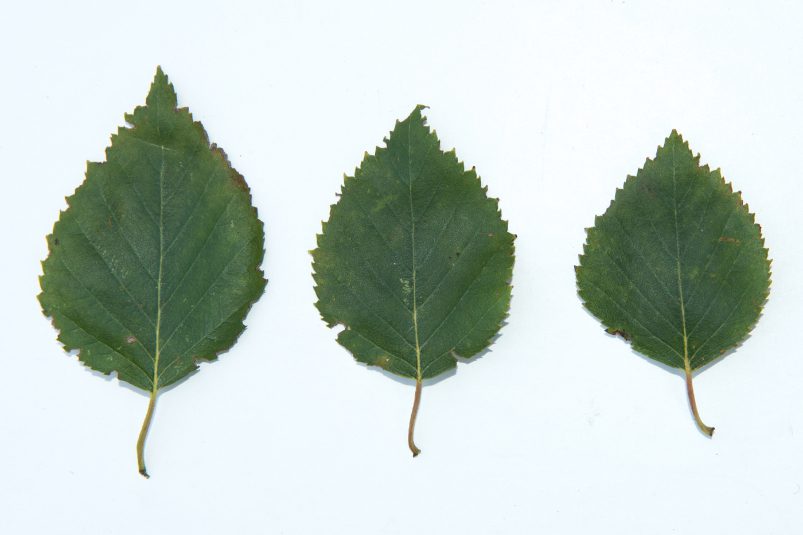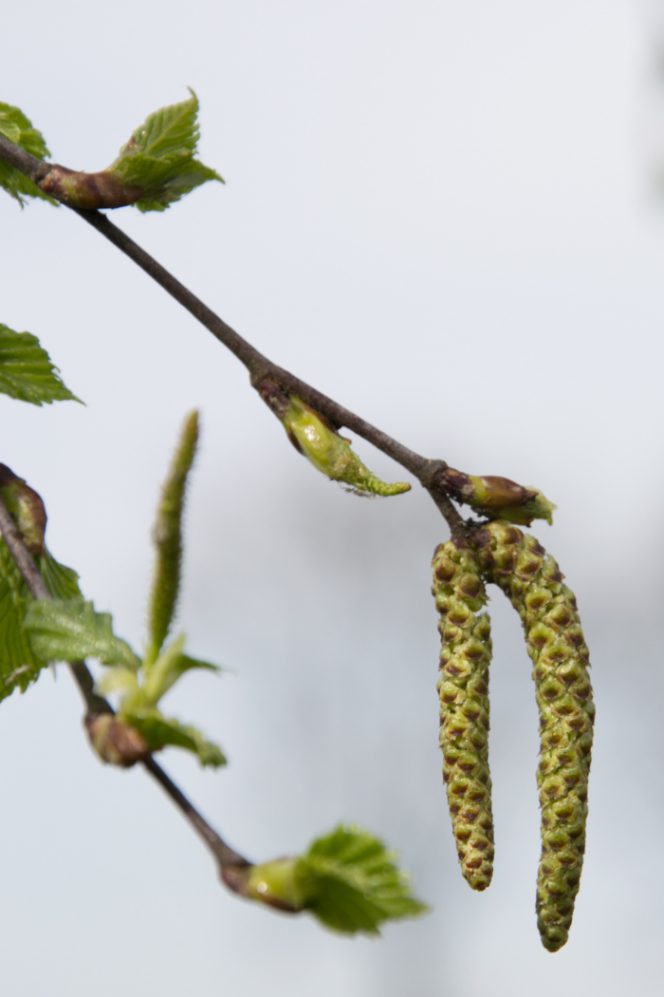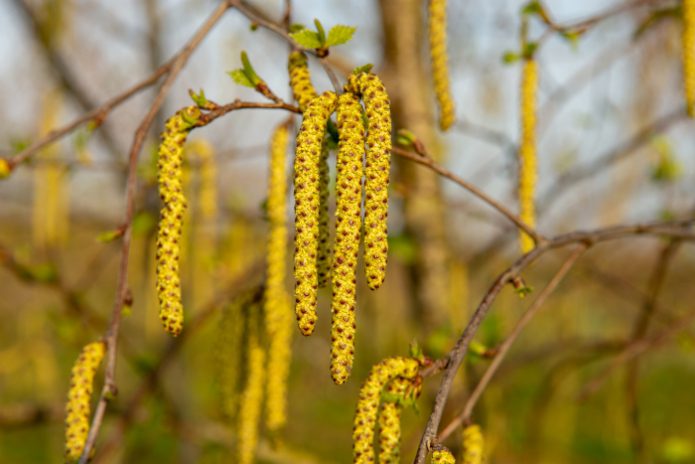Betula pubescens | Downy Birch | White Birch
Native to the UK and Europe, the Betula pubescens is very similar to the Betula pendula. The most noticeable difference is that the leaves of this tree have downy white hairs on the underside and stalk, while the Betula pendula is hairless. Also, the bark of this tree is darker, dull greyish white with obvious horizontal grooves. The overall shape is an upright ascending canopy topped with a pyramidal crown. Catkins appear early spring before the leaves. Male catkins are long and yellow-brown in colour and hang in groups of two to four at the tips of shoots, like lambs' tails. Female catkins are smaller, short, bright green and erect. Once the female catkins are pollinated they thicken and become a dark crimson before dispersing masses of tiny seeds into the wind. The Betula pubescens will tolerate cold, wet and poorly-drained conditions; clay and peaty areas. Like the Betula pendula, the Betula pubescens is a valuable source of food and shelter for over 300 different species of birds and insects.

